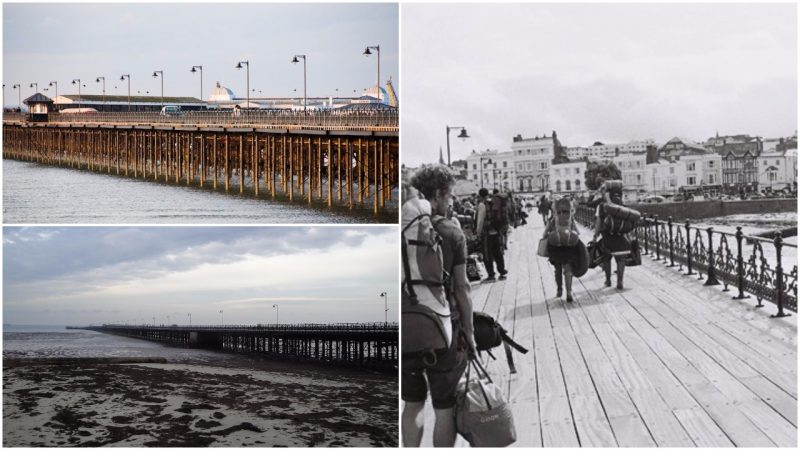Ryde Pier is an early 19th-century pier serving the town of Ryde, on the Isle of Wight, off the south coast of England. It is the world’s oldest seaside pleasure pier.Before the pier was built, passengers to Ryde had the uncomfortable experience of coming ashore on the back of a porter and then, depending on the state of the tide, having to walk as far as half a mile across wet sand before reaching the town.
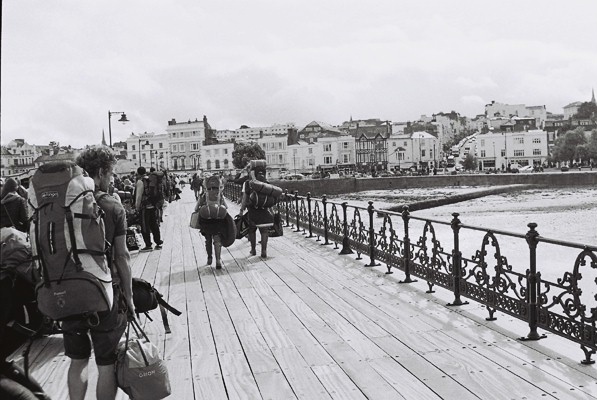
The need for a pier was obvious, especially if the town was to attract the wealthy and fashionable visitors who were beginning to patronise other seaside resorts across England.
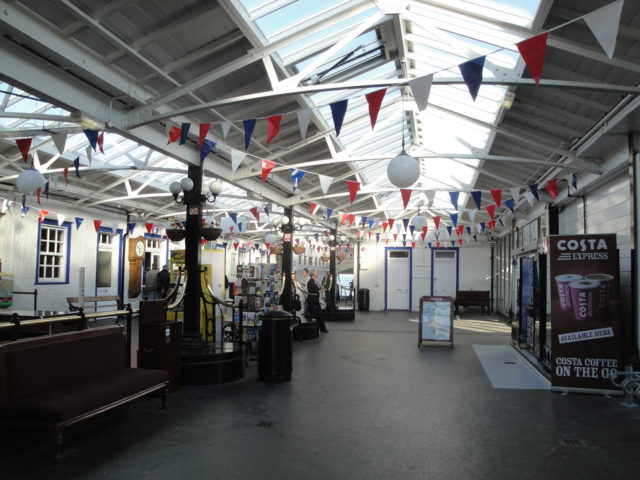
The pier was designed by John Kent of Southampton and its foundation stone was laid on 29 June 1813. The completed pier opened on 26 July 1814, and had, as it still has, a timber-planked promenade. The structure was originally wholly timber, and measured 527m. By 1833, extensions took the overall length to 681m. It is this pre-Victorian structure which has, with some modifications, carried pedestrians and vehicles ever since.
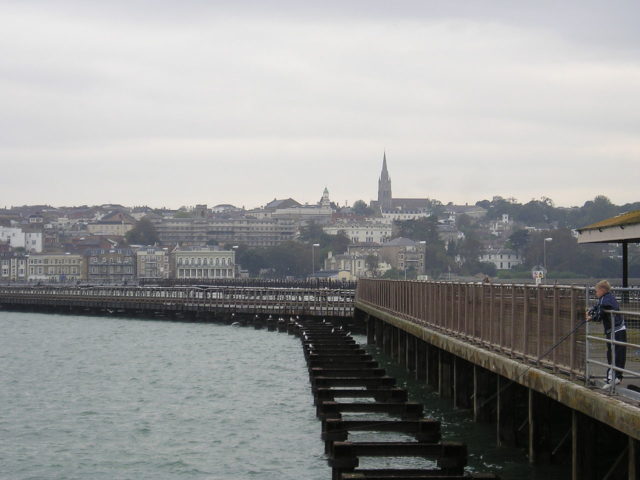
A second ‘tramway’ pier was built next to the first pier, opening on 29 August 1864. Horse-drawn trams took passengers from the pier head to the esplanade. Prior to the construction of the railway pier, the tramway continued to Ryde Railway Station at St Johns Road. From 1886 to 1927 the trams were powered by electricity from a third rail, and from then until 1969 the trams were petrol-powered.
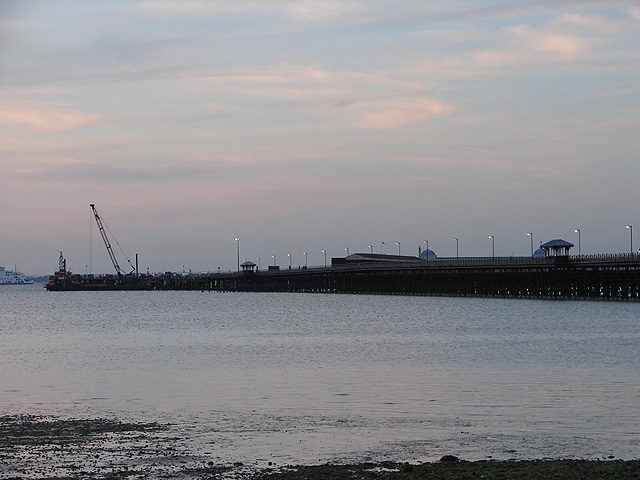
On 12 July 1880 a third pier was opened, alongside the first two, providing a direct steam railway link to the pier-head.The railway line was owned jointly by the London, Brighton and South Coast Railway and London and South Western Railway, as far as Ryde St Johns Road, to connect with their ship services to Portsmouth. However, trains were run by the independent Isle of Wight Railwayand Isle of Wight Central Railway, who owned the tracks beyond St John’s Road and operated through services to Ventnor and Cowes via Newport respectively.
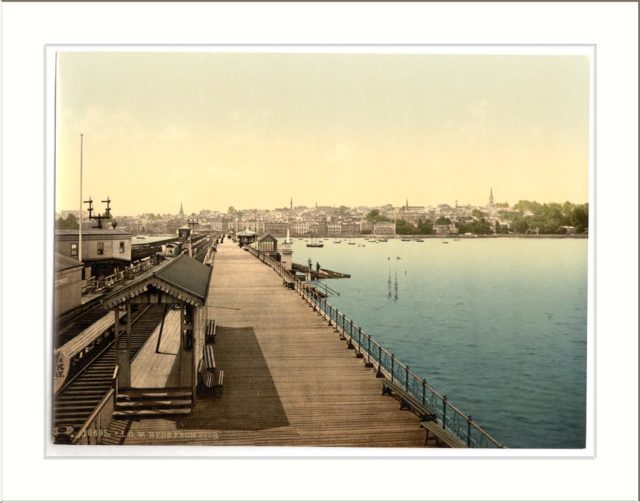
In 1895 a concert pavilion was constructed at the pier-head and over the next sixteen years the original wooden piles were replaced in cast iron. It was at Ryde Pier that the Empress Eugénie landed from Sir John Burgoyne’s yacht “The Gazelle” after her flight from Paris in 1870.The pier head was remodelled in the 1930s using concrete, and during the Second World War the pier was used for military purposes, with various modifications made to accommodate this.
The Concert Pavilion was at the centre of the narrative in Philip Norman’s book, Babycham Night; the author’s family ran the venue when it was known as the Seagull Ballroom in the 1950s. Relatives of his produced the eponymous champagne perry. The pavilion was later demolished, a few of the rotting piles are plainly visible, around the edge of an extended car parking area constructed in 2010, with the remainder shortened and hidden beneath the new structure.
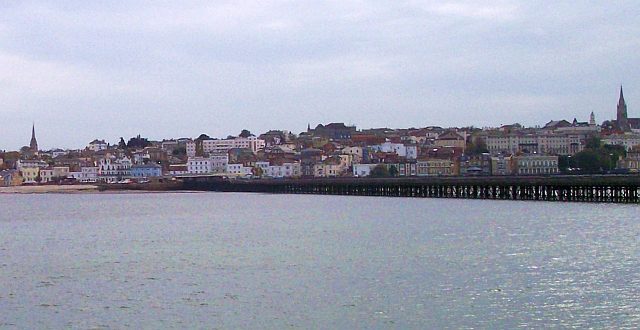
The tramway closed in 1969 and the structure was partially dismantled. This has left the disused and decaying tramway pier between the railway and promenade piers. The remaining structure has proved useful as a base for structures for temporary diversions from the promenade pier, such as when a ship sliced through the latter in 1974. In autumn 2010 the whole length was fitted with a temporary deck to provide a walkway during re-building works to the Promenade Pier.
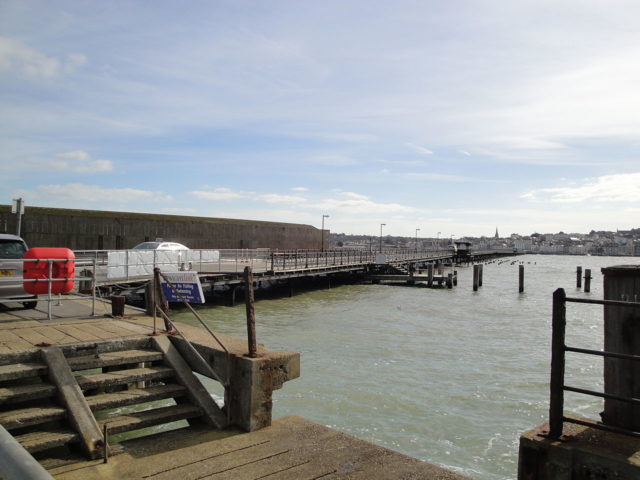
Ryde Pier was made a Grade II listed building in 1976. In the early 1980s a modern waiting area, including some of the original buildings, replaced the original Victorian waiting rooms at the pier-head. Further modifications of these facilities were made in 2009, including the provision of a conservatory-style refreshment area with views across the water towards Ryde. In May 2011 existing lighting columns on the Promenade Pier were fitted with Victorian-style brackets and lanterns.
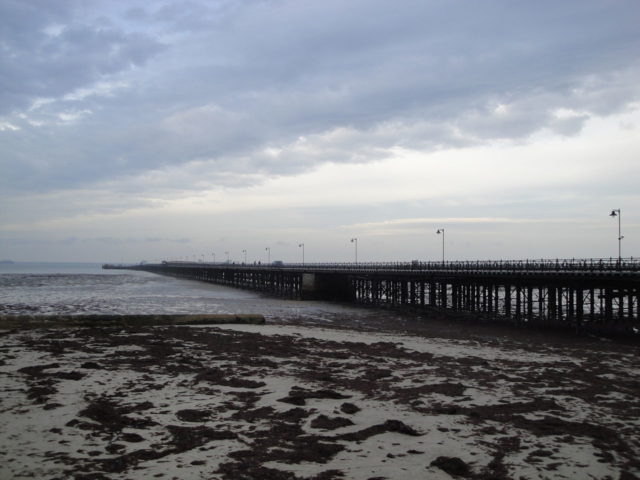
Today the pier is still a major gateway for passenger traffic to and from the Isle of Wight, with the Island Line train running from Ryde Pier Head station (at the pier head), via Ryde Esplanade down to the eastern side of the Island. The Wightlink catamaran runs regularly between Ryde and Portsmouth. It is possible to drive along the pier, and there is car parking on the large pier head.
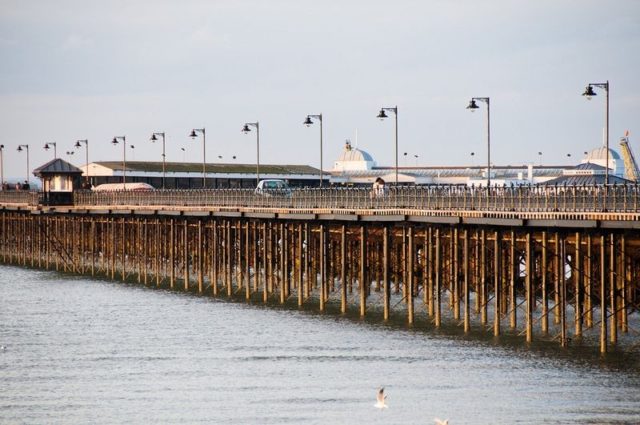
People travelling by foot are still allowed to walk along the pier, however they must contend with motor traffic which also runs along the wooden slats to the Wightlink terminal at the pier head. Once at the pier head, visitors have the ability to experience panoramic views across The Solent to Portsmouth on the mainland, roughly four miles away. On particularly clear days, visitors may also be able to see as far as Fawley and the Fawley Refinery to the west.
In 2005, Ryde Pier featured briefly in the film Fragile, in an inaccurate scene where Calista Flockhart is driven along the Pier after leaving a Red Funnel car ferry.
From August 2010 to March 2011, Ryde Pier was closed to all vehicles as structural work underneath the promenade pier failed to pass a regular inspection by Trant. The pier remained open to pedestrians, who from October 2010 used temporary decking on the tramway pier whilst much of the promenade pier was being renewed. Some Wightlink foot passengers were given permission to use Island Line train services free of charge between Ryde Interchange and the Pier Head. Work to extend the structure of the Pier Head to allow for additional car parking continued during this period. The renewal work being complete, the promenade pier has now re-opened.
